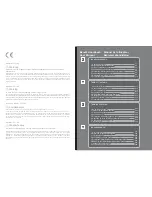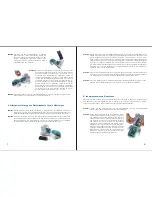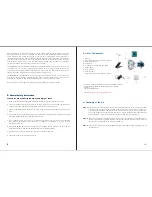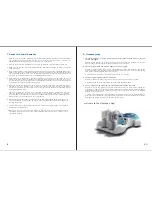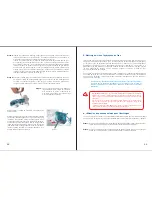
13
14
Serious interest in fuel cells did not begin until the 1960's, when they were used as power for
mans first missions to the moon. Although fuel cells still provide electricity and water for today's
space missions, this unique technology is now aimed at promoting a global transition to
renewable energy sources. Fuel cell vehicles that use hydrogen as fuel are called "zero emission
vehicles." If fuel cell vehicles were to use hydrogen produced by renewable sources of energy
such as solar or wind power, our fuel supply would be unlimited - and consumption of hydrogen
through fuel cells would not create any waste nor air pollution.
The
Hydrocar
uses a reversible Proton Exchange Membrane (PEM) fuel cell (see section 3, List
of components - part C). It generates electrical energy by consuming hydrogen located in the
on-board hydrogen storage cylinder (see section 3, List of parts and components, part F) which
reacts with oxygen, which is also created and stored on-board the kit.
The
Hydrocar
will independently find its way past any obstacles in its path. You will see it run
and reverse until it can find a forward direction clear of barries. When the kit runs on its own
hydrogen, two bright blue LED lights will start to flash from the top of the kit’s motor.
Now build your own hydrogen kit to learn about this revolutionary energy technology!
2. General safety Instructions
To avoid the risk of property damage, serious injury or death:
2. General safety Instructions
To avoid the risk of property damage, serious injury or death:
1.
Read carefully and fully understand the instructions before starting assembly of this kit.
2.
This kit is intended only for use by persons 14 years old and up, and only under the supervision
of adults who have read and understood the instructions in this user manual.
3. When assembling this kit, tools may be used. Extra care should be taken to avoid personal
injury.
4.
Some parts are small and fragile; please be careful when handling and connecting parts to avoid
breakage. Handle all parts and components with care.
5.
Do not attempt to use any part, item, or component provided in this kit for any other purpose
than what is instructed in this manual. Do not attempt to disassemble any part, item or
component in this kit.
6.
Turn off the battery pack when not in use. When the battery pack is turned on, do not allow the
metal leads to touch. Remove the batteries after use, and during storage.
7. Empty all water, hydrogen and oxygen from each component after use.
8. Clean your hands after working with the kit.
3. List of Components
A. Syringe
B. Short rubber tubes (see Chapter 4, Step 1)
C.
Reversible Fuel Cell
D. Solar panel
E. Kit chassis with motor and LED lights
F.
Battery pack
G.
Inner cylinders
H. Outer cylinders
I.
Long rubber tubes (see Chapter 4, Step 1)
You will also need the following 3 items (not included in this kit):
- 2 AA batteries (alkaline batteries highly recommended)
- Scissors
- 100 ml of distilled water*
* Distilled water is highly recommended for optimal use.
B
A
H
G
F
E
D
I
C
4. Assembly of the kit
Step 1:
Step 2:
Step 3:
Use the scissors (not included in this kit) to cut out two lengths of 4 cm (1.5 inches) of rubber
tubing from the long rubber tube provided in the kit. Place the red pin into one of the 4 cm
(1.5 inches) rubber tubes, and the black pin into the other 4 cm (1.5 inches) rubber tube.
These short rubber tubes become part (B) of the kit. Cut the remaining long rubber tube into
two equal pieces. These two longer pieces will be used to form part (I) of the kit.
Attach the short rubber tube (B) with the black pin to the top nozzle on the hydrogen side of
the fuel cell (marked H
2
). Attach the other short rubber tube (B) with the red pin to the top
nozzle on the oxygen side of the fuel cell (marked O
2
).
Insert the fuel cell (C) with the attached short rubber tubes (B) into the rectangular slot on
the chassis (E).


